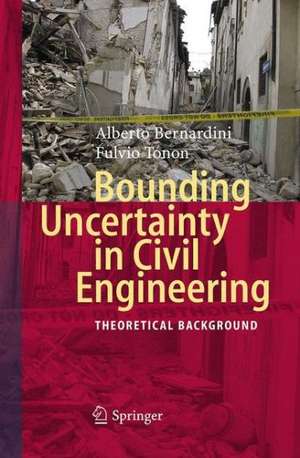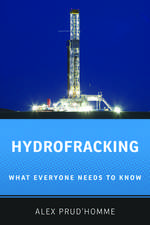Bounding Uncertainty in Civil Engineering: Theoretical Background
Autor Alberto Bernardini, Fulvio Tononen Limba Engleză Paperback – 30 oct 2014
| Toate formatele și edițiile | Preț | Express |
|---|---|---|
| Paperback (1) | 946.41 lei 6-8 săpt. | |
| Springer Berlin, Heidelberg – 30 oct 2014 | 946.41 lei 6-8 săpt. | |
| Hardback (1) | 952.40 lei 6-8 săpt. | |
| Springer Berlin, Heidelberg – 10 mar 2010 | 952.40 lei 6-8 săpt. |
Preț: 946.41 lei
Preț vechi: 1154.16 lei
-18% Nou
Puncte Express: 1420
Preț estimativ în valută:
181.09€ • 188.62$ • 150.97£
181.09€ • 188.62$ • 150.97£
Carte tipărită la comandă
Livrare economică 28 martie-11 aprilie
Preluare comenzi: 021 569.72.76
Specificații
ISBN-13: 9783642425424
ISBN-10: 3642425429
Pagini: 336
Ilustrații: X, 322 p.
Dimensiuni: 155 x 235 x 18 mm
Greutate: 0.47 kg
Ediția:2010
Editura: Springer Berlin, Heidelberg
Colecția Springer
Locul publicării:Berlin, Heidelberg, Germany
ISBN-10: 3642425429
Pagini: 336
Ilustrații: X, 322 p.
Dimensiuni: 155 x 235 x 18 mm
Greutate: 0.47 kg
Ediția:2010
Editura: Springer Berlin, Heidelberg
Colecția Springer
Locul publicării:Berlin, Heidelberg, Germany
Public țintă
ResearchDescriere
Taking an engineering, rather than a mathematical, approach, Bounding uncertainty in Civil Engineering - Theoretical Background deals with the mathematical theories that use convex sets of probability distributions to describe the input data and/or the final response of systems. The particular point of view of the authors is centered on the applications to civil engineering problems, and the theory of random sets has been adopted as a basic and relatively simple model. However, the authors have tried to elucidate its connections to the more general theory of imprecise probabilities, Choquet capacities, fuzzy sets, p-boxes, convex sets of parametric probability distributions, and approximate reasoning both in one dimension and in several dimensions with associated joint spaces. If choosing the theory of random sets may lead to some loss of generality, it has, on the other hand, allowed for a self-contained selection of the topics and a more unified presentation of the theoretical contents and algorithms. With over 80 examples worked out step by step, the book should assist newcomers to the subject (who may otherwise find it difficult to navigate a vast and dispersed literature) in applying the techniques described to their own specific problems.
Cuprins
Motivation.- Review of Theory of Probability and Notation.- Random Sets and Imprecise Probabilities.- Random Relations.- Inclusion and Mapping of Random Sets/Relations.- Approximate Reasoning.
Textul de pe ultima copertă
Taking an engineering, rather than a mathematical, approach, Bounding uncertainty in Civil Engineering - Theoretical Background deals with the mathematical theories that use convex sets of probability distributions to describe the input data and/or the final response of systems. The particular point of view of the authors is centered on the applications to civil engineering problems, and the theory of random sets has been adopted as a basic and relatively simple model. However, the authors have tried to elucidate its connections to the more general theory of imprecise probabilities, Choquet capacities, fuzzy sets, p-boxes, convex sets of parametric probability distributions, and approximate reasoning both in one dimension and in several dimensions with associated joint spaces. If choosing the theory of random sets may lead to some loss of generality, it has, on the other hand, allowed for a self-contained selection of the topics and a more unified presentation of the theoretical contents and algorithms. With over 80 examples worked out step by step, the book should assist newcomers to the subject (who may otherwise find it difficult to navigate a vast and dispersed literature) in applying the techniques described to their own specific problems.
Caracteristici
Basic ideas and methods of Random Sets in Civil Engineering are presented with the aid of simple worked-out examples and suggested problems
Useful as reference for practicing engineers involved in planning, design, construction and management of civil infrastructures, as well as a graduate-level textbook
Provides various applications with real case-histories from civil engineering: reliability analysis of structures, soil and rock slopes, etc.
Useful as reference for practicing engineers involved in planning, design, construction and management of civil infrastructures, as well as a graduate-level textbook
Provides various applications with real case-histories from civil engineering: reliability analysis of structures, soil and rock slopes, etc.












